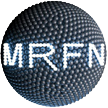This instrument is set up to run as a Gel Permeation Chromatograph (GPC) using chloroform as an eluent for use in our lab. It is equipped with an auto sampler, a column oven, and a variable wavelength detector. In addition, this instrument is coupled to a Wyatt Technologies DAWN HELIOS multi-angle light scattering detector as well as a Wyatt Technologies OptilabRex refractive index detector.



